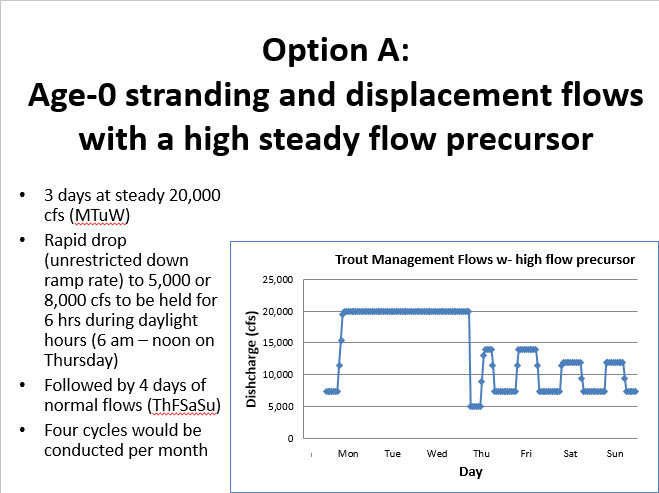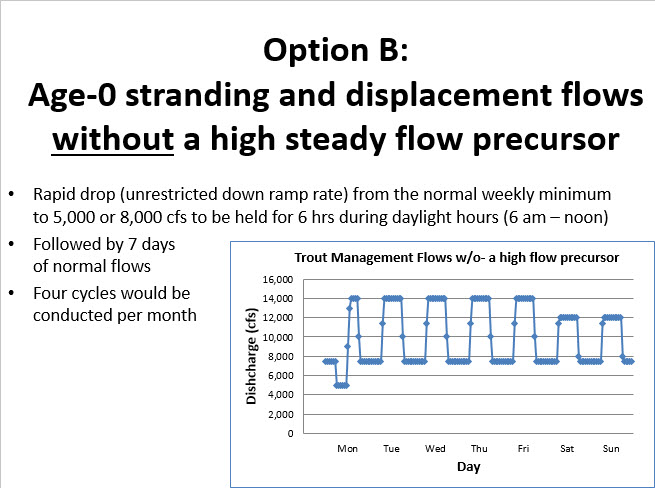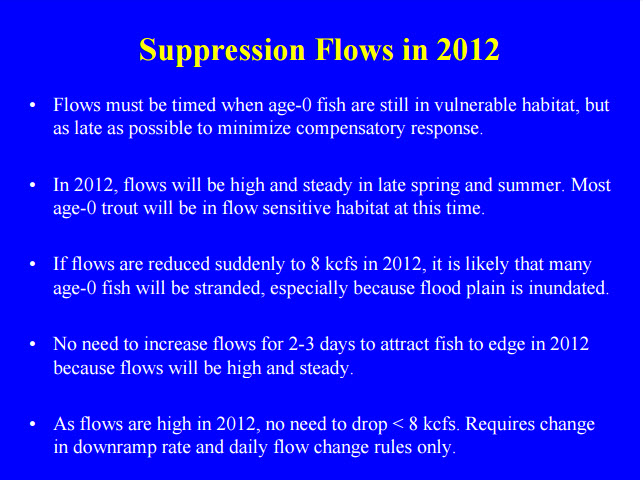|
Under the LTEMP EIS, TMFs could occur from May to August.
Lees Ferry Anglers Trout Fishery Recommendations
Recommendation #5.
Under certain conditions, rainbow trout at Lees Ferry have reproduced prolifically. Historically, when there is an over-abundance of young-of-year rainbow trout, the quality and condition of rainbow trout decline. This is likely due to the low quality and low abundance of food sources in Lees Ferry. Trout Management Flows (TMFs) are flow treatments that are hypothesized to reduce the abundance of young-of-year trout by stranding trout shortly after they emerge from their redds (Korman, Ecometric Research, Inc., personal communications, 2015).
We believe the best long term and ecologically appropriate solution to controlling trout densities is to increase invertebrate diversity and manage Grand Canyon Dam flows to avoid excessive trout spawning and recruitment (see recommendations related to the aquatic food base and equalization flows). We are concerned about the collateral damage that TMFs could have on other resources especially the aquatic food base and native fish. TMFs may be especially useful when spring HFE's are implemented or in years when high equalization flows are required.
TMF's should only be implemented in a carefully designed experimental framework that includes quantified criteria for success (for managing trout recruitment and improving the humpback chub population) and the impacts to other resources, especially the aquatic food base, are fully assessed. TMF's should only be used when the rainbow trout population is stable and includes a healthy abundance of all size classes of rainbow trout. Mitigation measures such as emergency stocking of trout need to be in place prior to the implementation of TMFs in case of catastrophic loss to the fishery (see recommendations on Trout Stocking). In conclusion, the experimental evaluation of TMFs needs to recognize the trout fishery as a highly valued asset. The AZGFD should have a seat at the table along with Federal agencies on any discussion and decisions related to implementation of TMFs.
| 



